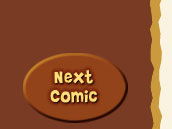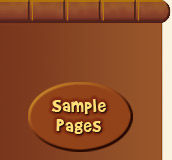|
|
|
Zap Comix #1
 |
|
 |
Back Cover
(click for larger image) |
 |
1st & 2nd Printings
(click for larger image) |
If you like this comic,
you might
also enjoy |
 |
Bijou Funnies |
AVERAGE SCORE 9 |
If you like this comic,
you might
also enjoy |
 |
Head Comix |
| REVIEW SCORE 9 |
|
1st Printing / February 1968 / 28 pages / Apex Novelties
 |
Zap Comix #1 is justly lauded for changing the comic-book paradigm, but is it actually any good? When the the author's wife and friends were hawking this to hippies on Haight Street in 1968, exactly what kind of comic book were they trying to sell?
Zap Comix certainly wasn't like anything anyone had ever seen before. The front cover art features a cartoonish jalopy packed with a family of six, the wife asking "what diddy-wah-diddy means" and the long-bearded husband quipping, "If you don't know by now, lady, don't mess with it!" In fact, Diddy-Wah-Diddy was the title of a 1956 Bo Diddley song (though the term long predates the song) and it refers to "the largest and best known of the Negro mythical places." Diddy-Wah-Diddy was a mythical, happy Southern town that black people jived about. But it still doesn't make sense on the cover of a comic book that declares "Zap Comics are Squinky Comics!" What the hell was this comic book trying to pull off? Is dis a system?
Author Robert Crumb resets the tone on the inside front cover with an autobiographical strip that portrays himself as a "mad scientist" who has produced this comic book as part of a master plan. Claiming to have the readers "right where I want you," he invites them to delve into the book.
The first story, "Whiteman," portrays an apparently cleancut businessman on the verge of a nervous breakdown. Whiteman tries to maintain a cool facade, but he can't stave off his base desires for sex and violence. In this four-page story, Crumb incorporates racist depictions of black people and utilizes the slur "nigger" twice. Oh, Crumb has us "right where he wants us" all right, instantly confronting us with the ugliest side of our own psyches as well as our social prejudices.
A few pages later, Crumb unleashes "Abstract Expressionist Ultra Super Modernistic Comics," an allusive, surreal three-page masterwork directly inspired by Rick Griffin's The Family Dog rock concert poster. Mixing iconic artistic styles with rock poster psychedelia and bulbous cartoons, Crumb's "Super Modernistic Comics" offers micro-landscapes with a litany of eyeballs, boobs and machines, many punctuated with musical symbols, all arranged in non-rectangular but parallel panels. Sure, it's just shit Crumb dreamt up, but with a little ingenuity you can almost sense a narrative there, even if you have to be on acid to immerse yourself in it.
The longest story in the book is the six-page "Mr. Natural Visits the City," in which Mr. Natural drops by Flakey Floont's hi-rise apartment in San Francisco to check up on his pal. Mr. Natural would become a mainstay in the early issues of Zap, and here the self-proclaimed sage is his usual condescending and impatient self, alternately praising and ridiculing Flakey while helping himself to a sandwich. Crumb created the cantankerous pseudo-guru in the mid '60s after he began taking LSD, which he said "made me stop taking cartooning so seriously."
Throughout Zap #1, Crumb integrates some silly, zany comic strips to remind us that, yes, we are reading a comic book after all: a cheap form of entertainment normally relegated to children and young teens doting on funny animals and superheroes. But Crumb hijacked the comic-book form and remade it with his own framework for recreation, targeted at adults and designed to expose the repugnant aspects of mass culture that everyone internalizes, and doing it with a wicked sense of humor.
Of course, first and foremost, Crumb is holding a mirror up to himself and illuminating the darkest corners of his own consciousness. For many, Crumb's brazen, unfiltered self-expression was very hard to take and it angered them; others recognized the malignance of the human condition and that no one is immune to its consequences. For the latter, it gave them an opportunity to laugh at both themselves and the craven society they struggle to live within.
When we look at Zap Comix #1 today, it doesn't seem so radical. Except for the blatant racist slurs and stereotypes scattered through the book, a young adult today might wonder what the fuss was all about. But that's how far the comics industry has come in 45 years; indeed, it's how far mass media communications has come. After a century of battles, from Anthony Comstock (the Mad Censor of New York) and the Hays Code to the Comics Code Authority and the ban on Lady Chatterly's Lover, freedom of expression in America had suffered some damning obstacles.
I'm not crediting Zap #1 with obliterating those obstacles, but it (and the first few issues of the series) was a significant player in advancing the freedoms for printed media, and was essential in enabling all comic art to explore social issues and human relationships previously uncharted in the medium. If ever there was an art form that held itself back and pushed itself down by its own restrictive boundaries, it was comic art.
Zap Comix #1 is one of the most important comic books in the history of comic books, and many mainstream comic-book publications and websites recognize Zap for breaking new ground. Not surprisingly, some are too dumb to understand that Zap #1 was the game-changer instead of Zap #0, but we can forgive them because it was really the first five issues of Zap that combined to shake the world.
But even when these media sources recognize Zap, they don't comprehend the full scope of the impact it had on the comic-book industry. Zap, and all underground comics, did much more than merely break taboos. They set new standards for the business of comic books, establishing rights for artists and writers that were rarely permitted in the mainstream comic-book industry. Chief among those rights were that creators retained their copyright on their characters, stories and original art, instead of those rights being usurped by the publisher.
Over the years, these extraordinary achievements in creator rights seeped into the mainstream comic book world, improving the lives of many thousands of comic book artists and writers. Comic creators who weren't even born until 20 years after the revolution (and have never heard of underground comics) would not have any place in the industry if not for the trails blazed by Zap #1. T here's no denying that Zap Comix #1 reset the comic-book paradigm and led to many thousands of comic publications that would follow in its wake.



HISTORICAL FOOTNOTES:
There are nine known printing variations of this comic book, though there are many more that cannot be distinguished from one another. Kennedy's Price Guide states there were 17 total printings totaling 290,000 copies, and that was only through 1982 (and only the 3rd to 7th identified printings by The Print Mint, as Apex Novelties did not retain printing records of the first two printings). But to some degree, it doesn't matter, since the printing differences are well established without controversy. Unlike my collection of Freak Brothers #1, I never felt compelled to collect anything but the first three printings of Zap #1, so I can't provide a comprehensive set of images. But the following describes the easily identified print variations:

1st printing - 25-cent cover price, states "Printed by Charles Plymell" on back cover
2nd printing -
35-cent cover price, states "Printed by Don Donahue" on back cover
3rd printing - 35-cent cover price, no printer statement on back cover
4th printing - 50-cent cover price
5th printing - 60-cent cover price
6th printing
- 75-cent cover price
7th printing - $1.50 cover price
8th printing
- $2.50 cover price
9th printing - $2.95 cover price

It is unknown exactly how many copies were produced during the later printings, but the quantity of the 1st printing has been extensively debated. Plymell claims it was only 1,500 copies while Donahue claimed it was 4,000 to 5,000. About 500 of the copies were destroyed in the 1969 fire at Mowry's Opera House, where Donahue's Apex Novelties had set up shop. What can be derived from sales records and expert opinion seems to settle somewhere around 3,500 copies, though some still insist it was way less, and I can't deny their credibility. It would appear that less than 1,000 copies probably remain in existence, and possibly many less than that.

The story that circulated for years was that Robert Crumb and his first wife, Dana, took the freshly printed copies of Zap #1 and sold them on the streets of San Francisco's Haight-Ashbury district from a baby carriage. This is only partially true; it was actually Don Donahue, not Crumb, who was there with Dana and her friend, Mimi. The cash envelope from that day, dated 2/25/68, indicates sales totals for Dana ($5.50), Don ($3.00) and Mimi ($12.00), for a total of 82 issues sold. Donahue did admit that Crumb, who lived nearby, may have joined Dana and Mimi and some point during their sales efforts.

Of course, that was only the first day of sales, and it takes no account of the sales to Bob Rita of Third World Distribution on Haight Street, a distributor who reportedly purchased over 1,500 copies himself, and possibly many more (if Donahue was right about the print quantity). Rita and his wife, Peggy, would later go into business with Don and Alice
Schenker at The Print Mint.

The 2nd printing had 5,000 copies and was obviously printed by Don Donahue and Apex Novelties. But sometime soon after the 2nd printing, the title moved to The Print Mint, where most (if not all) of the 3rd printings took place. By the time of the 3rd printing, the popularity of undergrounds had exploded and as many as 100,000 copies were printed, though they didn't all happen during one press run.
 |
Press runs at The Print Mint averaged close to 20,000 copies and the cover price often did not change between runs. Even so, all 35-cent covers without the "printer statement" on the back cover are considered 3rd printings. The Print Mint and Last Gasp copublished the book for the 7th printing, though Last Gasp took over the printing and eventually became the sole publisher.

COMIC CREATOR:
Robert Crumb - 1-28 |
 |
 |
 |
 |
2nd Printing
35-cent cover, "Printed by Don Donahue" on back cover.
|
3rd Printing
35-cent cover, no statement on back cover. |
|
|
|









































